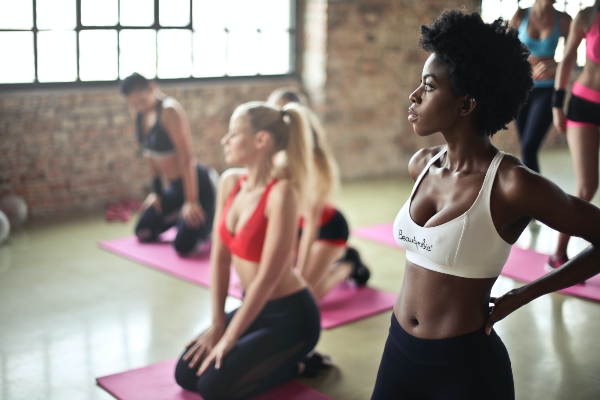Bikram Yoga is the hottest thing in yoga today.
By Bonny Osterhage
If you think yoga isn’t for die-hard athletes — think again! Ninety minutes of executing 26 poses in 105 degree temperatures burns can burn hundreds of calories.
“The body has to work so hard to cool itself that, in a Bikram yoga class, one can burn upward of 800 to 1,000 calories, depending on how hard one works,” says ReBeca Drury, Bikram instructor and practitioner.
Many people are scared to try Bikram due to the intense heat, but the truth is that Bikram is one of the most beneficial forms of Hatha Yoga that you can practice, and the results are amazing. We asked Drury, who has spent the past 5 ½ years devoted to Bikram, to address some of the most commonly asked questions about this unique form of exercise.
F&H: What is the purpose of the heat?
RD: The heat is a tool for deeper and quicker access to the muscles and for improved flexibility. Performing these yoga postures in a cold environment can potentially cause harm or injury. The idea is to practice yoga to reconstruct the body. In order to do this, you must first heat the body, making it pliable and malleable. By provoking the body’s cooling mechanism — sweat — to kick into high gear, detoxification of organs, glands and tissues takes place. Detoxification is one of at least five steps to good health.
F&H: What benefits does Bikram offer that other forms of yoga do not?
RD: Bikram differs from other forms of yoga in that it is 26 postures, two breathing exercises and 90 minutes in a hot room every time. The postures are done in the same order every time. Bikram Choudhury, the founder of Bikram yoga, put these 26 postures together very strategically through years of research. In order to teach Bikram, one must attend a nine-week, 700-hour intensive training that requires the trainee to relocate to the site for the entire time. It is there that they learn not only the physical aspects of Bikram Yoga but also the dialogue, which is a distinct set of verbal instructions.
F&H: We have seen yoga classes billed as “hot yoga” or “hot body yoga.” Are these the same as Bikram?
RD: In order to call yourself a Bikram Yoga studio, you must have gone through the training and teach the yoga to Bikram’s specifications. Many studios that teach “hot yoga” teach a similar series to Bikram’s but with some changes. This is not to say that what they are offering isn’t beneficial — it just cannot be called Bikram.
F&H: Is it safe to work out in such extreme temperatures?
RD: It is absolutely safe, as long as the students stay hydrated and listen to their bodies. We instruct students to lie down if they feel dizzy or light headed.
F&H: What can a first-timer expect?
RD: We ask that first-timers arrive 15 minutes before class for an orientation. We tell them that they can expect to sweat profusely, that the class will move quickly with lots of dialogue and instruction and that they will leave with a good diagnostic of themselves.
F&H: Is passing out or vomiting a real danger?
RD: It is rare.
F&H: What type of clothing should one wear?
RD: I personally recommend that you wear the least amount of clothing in which you are comfortable. Basically, wear anything you like as long as it fits tightly to your body and the fabric does not bind.
F&H: Should you eat before the workout? What about hydration?
RD: Do not eat two hours before practicing Bikram. After class, hydrate with water and electrolytes.
F&H: What are the benefits of Bikram?
RD: There are so many! A few include increased energy, improved cardiovascular function, improved circulation, stress management, improved sleep, weight loss, improved posture, cleansing of arteries and veins, relief of lymphatic congestion, improved elimination, improved digestion and many, many more benefits.






